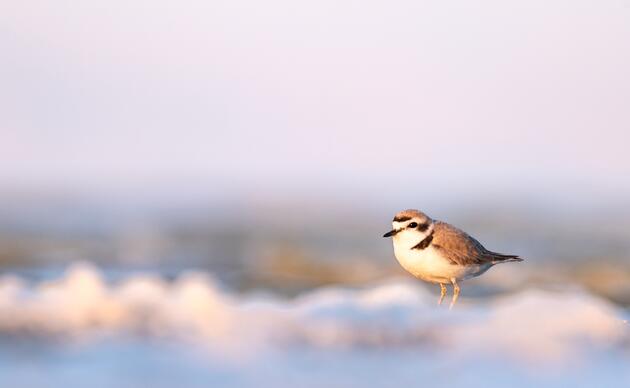Maybe you’re new to birding, or perhaps you just want to impress your boyfriend/girlfriend by identifying that winged beast on your lawn. But if you're going to be a Californian, at a minimum you should have some familiarity with the Golden State's natural wonders. We did a little thinking around the office today and came up with this list of birds that every Californian should know.
1. Brown Pelican/White Pelican
No other bird in California has a beak like a pelican, so that’s your first clue. But you should know how to tell these two apart. Obviously, one is brown and the other white, but there other tells. Brown Pelicans (left) are smaller, live near the ocean, have a lot of colors beyond brown, and dive into the water from the air. White Pelicans (white) are much larger, tend to live more inland, and don’t plummet from the sky to catch food.
2. Western Scrub Jay
We don’t have Blue Jays in California, so stop calling them that. We have Scrub Jays. And they’re bigger and longer than bluebirds. And they’re loaded with attitude.
3. Rock Pigeon (sometimes called Rock Doves or simply pigeons)
You know these guys, so you might as well know what they’re called. They aren’t native to California, but are nonetheless ubiquitous. They're considered a nuisance by many, but they have their charms.
4. California Quail
It’s our state bird, so you better know. The giveaway is the feather on its head that curves forward. Rarely flies. Has a call that some have described as "Chi-ca-go!" (photo by Len Blumen)
5. Yellow-billed Magpie
Only lives in the Central Valley and coastal valleys of California. Such a cool look with the white and iridescent back and tail. (photo by Dan Hutcheson)
6. Turkey Vulture
A lot of people look up and say, “It’s a condor!” when it’s really a Turkey Vulture. But really, when you look up and see something that looks like a vulture, it usually is just that. After all, there are only about 250 free-flying California Condors in the world. The most obvious tell that it’s a vulture, and not a condor, is that when you look at it from below, the white patch on the wings of a vulture are toward the back. (photo by Nocillacast)
7. Mallard
In many ways, this is the duck of ducks. If you’re going to know one duck, it should be the mallard, because it might be the most common. Green head, gray flanks, and black tail.
8. Crow/Raven
Everybody knows what these are, but not everyone can tell them apart. Here are a few ways: Ravens are substantially bigger than crows, about the size of a hawk. The American Crow (left) has a conical beak, while Ravens (right) have a big, thick beak that is not conical. Viewed from the ground, the tail feathers of a flying crow are like a fan, while those of a Raven are more like the pointed end of a diamond. Crows squawk, while Ravens have a low croaking sound.
9. Red-tailed Hawk (Chris Cox)
There a lot of different kinds of hawks out there, but this one is by far the most common. In fact, if you don’t know what kind of hawk you’re looking at, the best bet is to assume that it’s a Red-tail. But the dead giveaway is the red tail, if you want to be sure.
10. Mourning Dove
This is a beautiful, peaceful bird that you should not mistake for a Rock Pigeon. Light gray with spots, with a pleasant cooing sound. Not to be mistaken for the Eurasian Collared-Dove, an invasive species which is a bit larger, has a harsher sound, and features a black stripe along the nape of its neck.
* OK, there are more than ten.
By Garrison Frost
Stories from the field and across the state
Shorebird paradises, on-the-ground science, and state-wide advocacy. Read more about how we're building a better future for all Californians and the birds that rely on our beautiful state.




